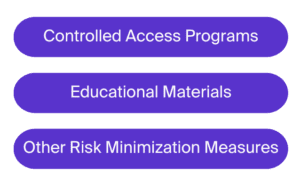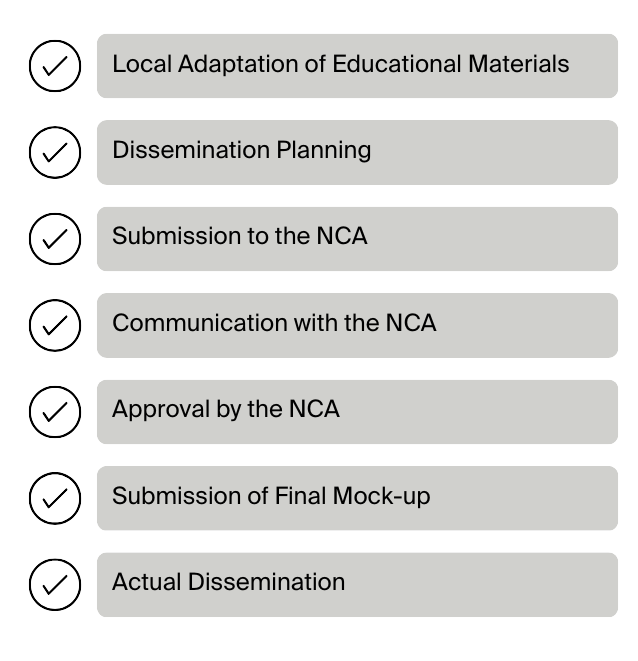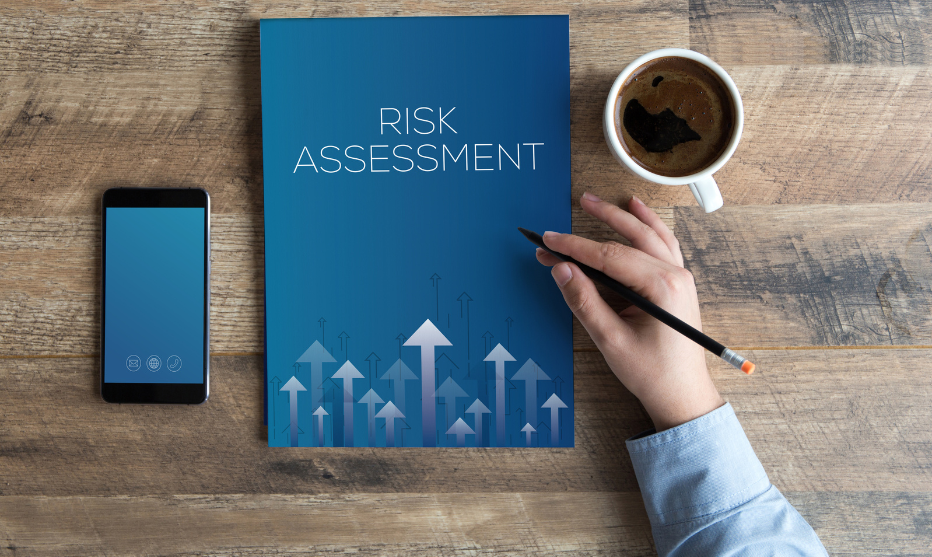
The Growing Importance of Educational Materials among aRMMs
Under the current version of GVP Module 16, all additional Risk Minimisation Measures are grouped into three categories: Controlled Access Programs, Educational Materials, and other risk minimisation measures (such as controlled distribution systems or pregnancy prevention programs or plans)

Among additional Risk Minimisation Measures, Educational Materials are the most common and popular type. Based on the data of products approved by the European Medicines Agency (EMA) in 2015-2017, approximately two-thirds of additional Risk Minimisation Measures approved as part of the Risk Minimisation Plan were Educational Materials targeted to healthcare professionals (HCPs), patients, or both patients and HCPs. Furthermore, most of the changes being proposed to additional Risk Minimisation Measures by the revision of GVP Module 16, as released by EMA for public consultation, concern specifically the Educational Materials. These include introducing new tools (which will be called guides), including additional requirements for dissemination plans to be submitted to National Competent Authorities for approval. All this shows that Educational Materials already play a significant role in risk minimisation and that their importance will only increase in the future. Consequently, pharmaceutical companies should be ready for the national implementation of Educational Materials and have sufficient time and resources to do that.
Implementation of Educational Materials on the National Level
The EU Good Pharmacovigilance Practice (GVP) Module XVI (and related Addendum specifically covering Educational Materials) provides detailed guidance and requirements for developing Educational Materials and evaluating their effectiveness. The general flow of development and implementation of Educational Materials is as follows:
- A safety concern is identified;
- The appropriate educational tools to minimise it are defined;
- These tools are then approved together with the approval of the Risk Management Plan (RMP).
Once the Educational Materials are defined and approved along with the RMP, the Marketing Authorisation Holder (MAH) must implement them individually in each member state.
On a high level, this includes preparing a national version of the materials, submitting it to the National Competent Authority (NCA), receiving their approval, and disseminating the material locally. It may sound relatively easy, but unfortunately, it is not. All these steps need to be done individually in each member state. Each of those Member States has its local requirements, which can sometimes result in unexpected issues during the implementation, and consequently delay the product’s launch. We’ll delve deeper into these local implementation nuances in the following paragraphs.
Picture 2: National Implementation of Educational Materials

National Competent Authority (NCA) Timelines for the Approval of Educational Materials
The timelines are the first to consider when planning the local implementation of Educational Materials. According to the GVP, the NCA’s review and assessment of the submitted Educational Materials should take 60 days on average. Nevertheless, in practice, the timelines vary. While in some countries, one may receive the approval within 60 days (even counting in the clock stops), the process can take much longer in other countries. In rare instances, it may take up to 6 months. Review timelines may be impacted by many factors, such as the quality of the submitted documents, NCA’s internal timelines for review, clock-stops and how effective the communication with the NCA is during the assessment phase.
Planning of the Implementation of Educational Materials
Since the Educational Materials should be ready for dissemination upon product launch, the scheduled product launch dates usually set the deadlines for the local implementation of Educational Material. Therefore, while planning product launches, close collaboration between the commercial department and the regulatory affairs or pharmacovigilance teams, who implement the Educational Materials, is essential. The regulatory affairs and pharmacovigilance teams (depending on who is responsible for the Educational Materials) should be promptly informed and kept updated about product launch dates in each country to ensure that the Educational Materials are ready for dissemination before the scheduled product launch date.
Adaptation and Localisation of Educational Materials for Each Member State
Everything starts from the translation of the materials into the national language. For this purpose, some companies are using translation agencies or translation service providers. Although this approach saves some time and resources, it usually is a literal translation from English into the national language. However, the material must also be adapted to the relevant local requirements. In other words – the Educational Material must be localised for each Member State.
The national requirements for Educational Material may differ significantly across the Member States. Most of the differences can be noted in the following areas:
- Requirements for branding – some countries restrict this, while others may allow some branding on the materials.
- Requirements for the visualisations – for example, the possibility to place logos on the material and its allowed size.
- National texts or information that must be placed within the Educational Material.
The submission of unlocalised materials will delay the NCA’s approval, not to mention the harm to the company’s reputation in front of the NCA due to not following the legal requirements.
Furthermore, it is important to note that some countries require Educational Materials to be presented in more than one language. For example, three languages are required in Belgium and two in Luxembourg and Finland. Since some countries share common languages, one mistake can be made. For example, the Educational Material already approved for Germany (France or the Netherlands) is submitted for approval in Belgium with minor administrative modifications but without undergoing a complete localisation process. Not only will all three versions not be localised for Belgium, but all three versions will, in fact, be localised for other countries.
National Target Audience And Dissemination Method
When the localised version of the Educational Material is already available, there is a need to define the national target audience and the dissemination method. Both are needed to be defined already within the submission package. Of course, this can be done simultaneously with localisation (or even before the localisation).
In some instances, it can be an easy and uncomplicated task, for example, a patient alert card to be distributed as part of the product packaging. However, this is not always the case. Usually, national knowledge and presence are highly beneficial while identifying the potential target audience. For example, your local responsible PV contact person (LPPV / LCPPV) or a local regulatory affairs office can discuss with the NCA the acceptance of an appropriate audience in advance. They can also contact the national physician societies or associations for advice and even agree to some support for internal dissemination within society.
Submission of the Educational Material to the National Competent Authority (NCA) for Approval
The next thing to consider is the contents of the submission package. The localised version of the Educational Material, the Dissemination Plan, and a Cover Letter will be required in each country. However, this will usually still not mean a complete submission package.
For example, some countries require to include of the effective version of a full RMP or proof of payment of the applicable fees for the assessment of the Educational Materials. Some countries have other local requirements which should be taken into account.
While email submission is now accepted in most countries, there may be additional requirements for how the email should be constructed and by whom the submission can be made. For example, the submission is only accepted if it is made by the nominated Local Person for Pharmacovigilance (LPPV), or, for example, the submission package may be required to be signed by a person having a legally binding local electronic signature.
Approval of the Educational Material by the National Competent Authority (NCA) And The Next Steps
After the submission is made, in the best-case scenario, the approval is issued without further delays. Unfortunately, usually, this is not the case, and comments or remarks are received from the NCA for the material submitted. It is a common practice that those comments are received in the local language, sometimes even not specifying what exactly needs to be adjusted and simply stating that some part of the material does not comply with local requirements (for example, that the logo is not in line with local requirements). In this case, a local person can again be invaluable and streamline the process, dealing directly with the NCA and adjusting the materials to get approval faster.
It is important to note that, in many countries, even after receiving the NCA’s approval, it is further required to submit the final mock-up of the approved Educational Material. Such mock-up must include the local version of an Educational Material and its approval date by the NCA. Thus, in most cases, the dissemination of Educational Materials may only start after the final confirmation of the submitted mock-ups is received.
Summary
To summarise, the efficient approach for the national implementation of educational materials is not rocket science. It is a relatively simple approach, and all one needs to know or to have in place is:
- Knowing internal plans well in advance for the launch of the product in certain Member States
- Knowing local regulatory requirements and specifics for the implementation of additional Risk Minimisation Measures at the national level
- Having sufficient resources for the national implementation of additional Risk Minimisation Measures, ideally, someone fluent in the local languages, familiar with the requirements, and has adequate experience.
If you have all this in place, the Educational Material implementation process should be as smooth as possible.
Additional Resources
To help MAHs cope with the implementation of Educational Materials on the national level, the Insuvia team has developed a comprehensive guidance document on country-specific requirements for Educational Materials implementation in the EEA/EU member states. Our guidance document captures the key local requirements and country differences, including:
- Timelines for local approval of Educational Materials
- State fees applicable for Educational Materials review by the NCAs
- Submission routes of Educational Materials to the NCAs
- Branding possibilities on Educational Materials and applicable requirements
- Languages in which Educational Material should be made available
- Final mock-ups approval requirement prior dissemination





